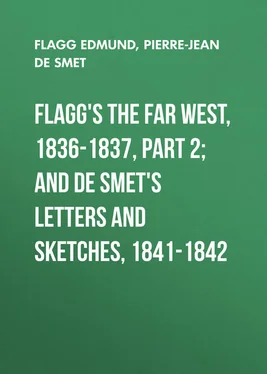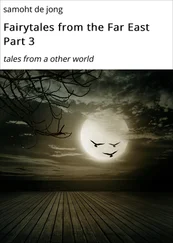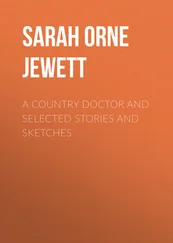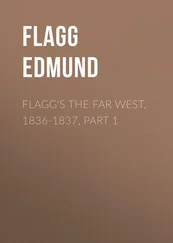Edmund Flagg - Flagg's The Far West, 1836-1837, part 2; and De Smet's Letters and Sketches, 1841-1842
Здесь есть возможность читать онлайн «Edmund Flagg - Flagg's The Far West, 1836-1837, part 2; and De Smet's Letters and Sketches, 1841-1842» — ознакомительный отрывок электронной книги совершенно бесплатно, а после прочтения отрывка купить полную версию. В некоторых случаях можно слушать аудио, скачать через торрент в формате fb2 и присутствует краткое содержание. Издательство: Иностранный паблик, Жанр: foreign_antique, foreign_prose, на английском языке. Описание произведения, (предисловие) а так же отзывы посетителей доступны на портале библиотеки ЛибКат.
- Название:Flagg's The Far West, 1836-1837, part 2; and De Smet's Letters and Sketches, 1841-1842
- Автор:
- Издательство:Иностранный паблик
- Жанр:
- Год:неизвестен
- ISBN:нет данных
- Рейтинг книги:4 / 5. Голосов: 1
-
Избранное:Добавить в избранное
- Отзывы:
-
Ваша оценка:
- 80
- 1
- 2
- 3
- 4
- 5
Flagg's The Far West, 1836-1837, part 2; and De Smet's Letters and Sketches, 1841-1842: краткое содержание, описание и аннотация
Предлагаем к чтению аннотацию, описание, краткое содержание или предисловие (зависит от того, что написал сам автор книги «Flagg's The Far West, 1836-1837, part 2; and De Smet's Letters and Sketches, 1841-1842»). Если вы не нашли необходимую информацию о книге — напишите в комментариях, мы постараемся отыскать её.
Flagg's The Far West, 1836-1837, part 2; and De Smet's Letters and Sketches, 1841-1842 — читать онлайн ознакомительный отрывок
Ниже представлен текст книги, разбитый по страницам. Система сохранения места последней прочитанной страницы, позволяет с удобством читать онлайн бесплатно книгу «Flagg's The Far West, 1836-1837, part 2; and De Smet's Letters and Sketches, 1841-1842», без необходимости каждый раз заново искать на чём Вы остановились. Поставьте закладку, и сможете в любой момент перейти на страницу, на которой закончили чтение.
Интервал:
Закладка:
Comment by Ed. This hypothesis, in the main formulated by H. R. Schoolcraft, is still in its general features accepted by many geologists. See also Elisée Reclus, The Earth and its Inhabitants (New York, 1893), article "North America," iii, pp. 224, 225.
72
A similar spring is said to issue from debris at the foot of the cliffs on the Ohio, in the vicinity of Battery Rock. Its stream is copious, clear, and cold, ebbing and flowing regularly once in six hours. This phenomenon is explained on the principle of the syphon. Similar springs are found among the Alps. – Flagg.
73
Flagg is somewhat mistaken concerning the age of the block-house settlement. Previous to 1800, the only American settlement in St. Clair County was Turkey Hill, which at that date numbered twenty souls. William Scott, the first settler, moved thither with his family from Kentucky in 1797, and became a permanent resident. About 1810, Nathaniel Hill, Joshua Perkins, Reuben Stubblefield, James and Reuben Lively, and Richard Bearley settled in the southeastern corner of St. Clair County, and for protection against the Indians built a block-house near the present city of Hillstown on Dosa Creek (a tributary of the Kaskaskia). The fort was later abandoned, and the settlers moved to other parts of the state. For a description of the fort, see History of St. Clair County, Illinois (Philadelphia, 1881), pp. 261, 262. – Ed.
74
William Buckland (1784-1856), a distinguished English geologist, who was as well canon of Christ College, Oxford (1825), and dean of Westminster Abbey (1845), contributed many valuable papers to geological publications. The Royal Society's Catalogue of Scientific Papers shows that Buckland was the author of fifty-three memoirs. His most important publication, Geology and Mineralogy Considered with Reference to Natural Theology (a Bridgewater thesis, 1836), attempts to prove by aid of science, "the Power, Wisdom, and Goodness of God, as manifested in the Creation." – Ed.
75
George Leopold Crétien Frédéric Dagobert, baron de Cuvier (1769-1832), a French naturalist, was founder of the science of comparative anatomy. He was chosen as one of the original members of the Institute, organized in 1795. After holding various administrative offices under Napoleon, he was appointed (1814) a councilor of state, which position he held under Louis XVIII. In 1819 he was made president of the committee of the interior, and chancellor of the University of Paris. Louis Phillipe made him a peer of France. Cuvier's scientific work falls into three divisions – paleontology, systematic zoology, and comparative anatomy. He wrote extensively in all these fields, and in each achieved high recognition. Consult: Sarah Lee, Memoirs of Baron Cuvier (London, 1833), and Ducrotay de Blainville, Cuvier et Geoffrey Saint Hilaire (Paris, 1890). – Ed.
76
Prairie du Pont (Prairie Bridge), located upon a creek of the same name, was so christened for a log bridge which in early times crossed the creek at this point. The settlement was first made about 1760 by people from Cahokia who, according to tradition, fled thither from the floods; the site is ten or twelve feet higher than that of Cahokia. The Sulpician missionaries had built a mill there in 1754. In 1844 the place was nearly destroyed by floods. – Ed.
77
For a short historical sketch of Cahokia, see A. Michaux's Travels, in our volume iii, p. 70, note 135. Flagg, in common with the earlier writers, places the date of Cahokia too early. – Ed.
78
By act of Congress approved March 1, 1791, "a tract of land including the villages of Cohos [Cahokia], and Prairie du Pont, and heretofore used by the inhabitants of the said village as a common," was, "appropriated to the use of the inhabitants … to be used by them as a common, until otherwise disposed of by law." By the same act, four hundred acres were ordered to be laid out, and "given to each of those persons who in the year one thousand seven hundred and eighty-three were heads of families at Vincennes, or in the Illinois country, on the Mississippi, and who, since that time, have moved from one of the said places to the other." – Ed.
79
In 1815 Etienne Pinçoneau (now spelled Pensoneau) laid out a town on the present site of East St. Louis, and named it Jacksonville. His efforts proving unsuccessful, he sold the land to McKnight and Brady, who in May, 1818, platted the site and named it Illinoistown. During the succeeding autumn, the citizens of Cahokia appointed five agents to lay out a town site on the Cahokia commons. Illinois City thus came into existence, and the action of the citizens was legalized by Congress (May 1, 1820). Illinoistown, Illinois City, and other small villages were later united to form East St. Louis, which was incorporated in 1861 and chartered four years later. – Ed.
80
Father de Smet was sent on the mission to the Flathead Indians by Joseph Rosati. For an account of the latter, see Flagg's Far West , in our volume xxvi, p. 164, note 115. – Ed.
81
In 1821, Pierre Chouteau, Jr., of the American Fur Company, established a general agency in the bottom opposite Randolph Bluffs, about three miles below the present site of Kansas City. His buildings having been destroyed by a flood in 1826, he erected others on higher ground, in the present Guinott addition, near the foot of Walnut street. The place was called Chouteau's Warehouse, and soon became a favorite shipping point for the Indian trade. In 1831 John McCoy built a trading house at the crossing of the roads from Chouteau's Warehouse and Independence. Two years later he platted a town at this point and named it Westport. Westport first used Chouteau's Warehouse as a landing place, but later built a wharf on the high rocky bank of the river, at the present foot of Grand Avenue, Walnut, Main, and Delaware streets. Because of superior natural advantages, this latter place soon became the principal landing, and in 1838 a company purchased the site, platted a town, and named it Kansas City. Westport thus became the starting point for the caravans to the Western country.
Prior to 1822, the overland expeditions seem to have been composed of men on foot carrying their wares in packs. Later, pack horses were substituted, and by 1830 wagons were used almost exclusively. Owing to the dangers from hostile Indians, the traders going to Santa Fé or points in the Rocky Mountains formed themselves into caravans for mutual protection, with an organized system of guards and camps. See Gregg's Commerce of the Prairies , in our volume xix, pp. 198-201, for a description of these caravans. – Ed.
82
Andrew Drips was born in Westmoreland County, Pennsylvania (1789), went west, and with eight other St. Louis men formed the Missouri Fur Company (1820). He was later a member of the independent firm of Fontenelle and Drips. When the American Fur Company began their westward expansion, Drips entered into their employ, having charge after 1836 of annual expeditions to the mountains. In 1842, the company having encountered strong opposition, the federal government was prevailed upon to revive the office of Indian agent. Drips served four years as agent to the Sioux of the upper Missouri, with an annual salary of $1500. In this capacity, Drips rendered valuable service to the company. Upon the expiration of his term of office, he re-entered the company's employment, in which he continued until his death at Kansas City, Missouri (1860). He married a woman of the Oto Indian nation. Their daughter, Mrs. William Mulkey of Kansas City, has in her possession many of her father's valuable papers. See H. M. Chittenden, American Fur-Trade of the Far West (New York, 1902). – Ed.
Читать дальшеИнтервал:
Закладка:
Похожие книги на «Flagg's The Far West, 1836-1837, part 2; and De Smet's Letters and Sketches, 1841-1842»
Представляем Вашему вниманию похожие книги на «Flagg's The Far West, 1836-1837, part 2; and De Smet's Letters and Sketches, 1841-1842» списком для выбора. Мы отобрали схожую по названию и смыслу литературу в надежде предоставить читателям больше вариантов отыскать новые, интересные, ещё непрочитанные произведения.
Обсуждение, отзывы о книге «Flagg's The Far West, 1836-1837, part 2; and De Smet's Letters and Sketches, 1841-1842» и просто собственные мнения читателей. Оставьте ваши комментарии, напишите, что Вы думаете о произведении, его смысле или главных героях. Укажите что конкретно понравилось, а что нет, и почему Вы так считаете.












